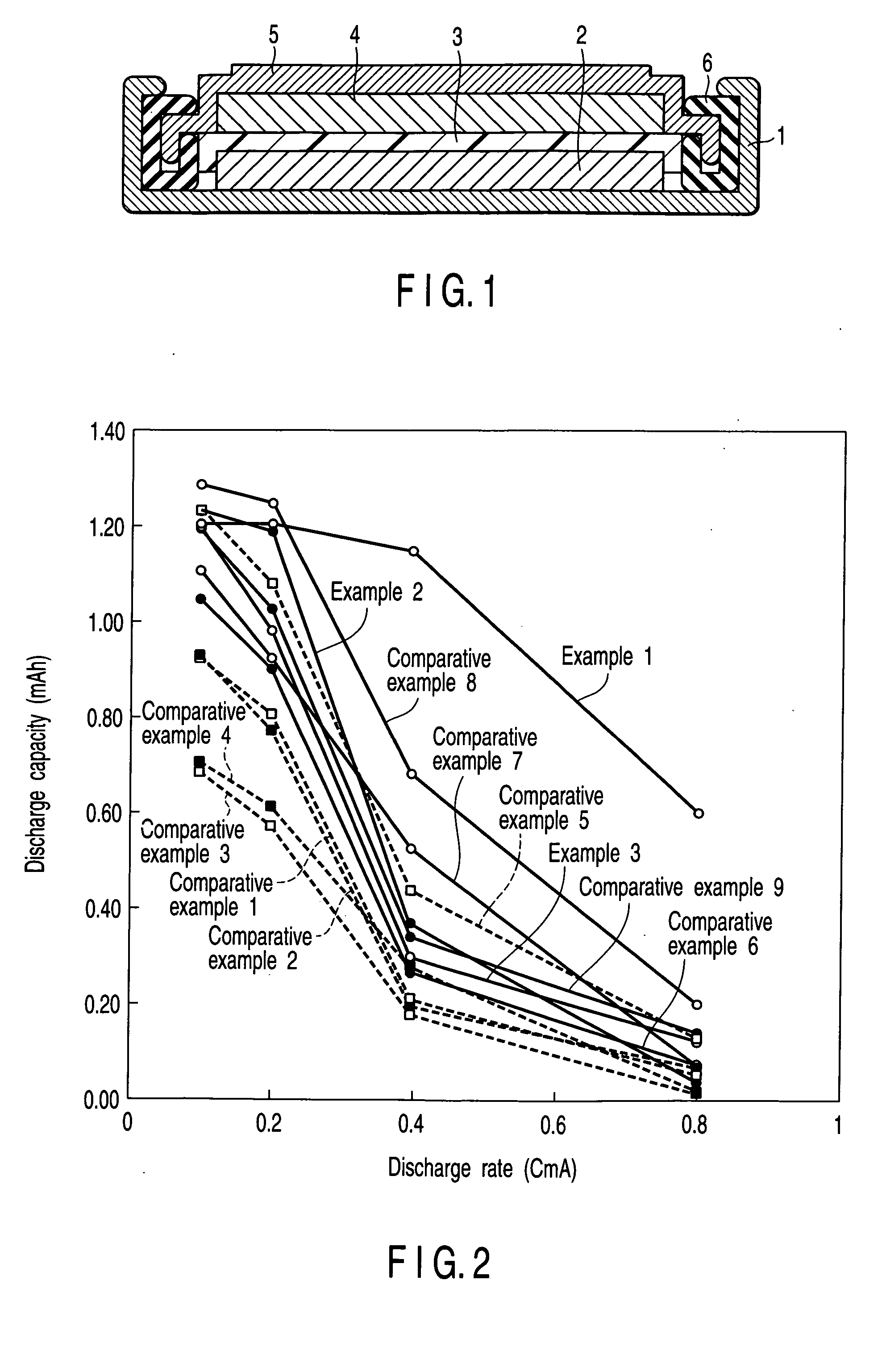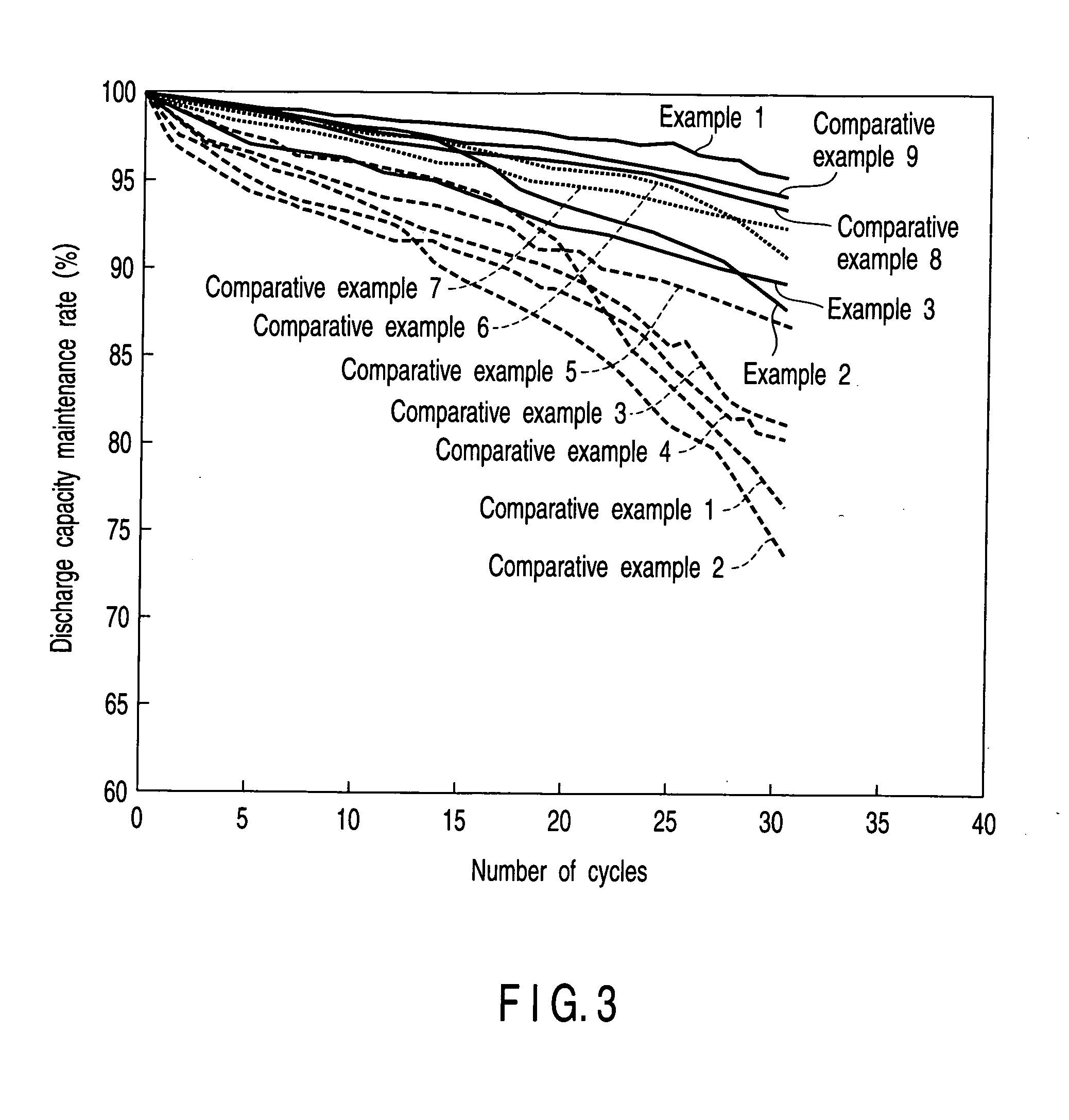Nonaqueous electrolyte battery
a non-aqueous electrolyte, battery technology, applied in the direction of cell components, sustainable manufacturing/processing, final product manufacturing, etc., can solve the problems of small size and light weight, non-aqueous electrolyte secondary batteries tend to be unstable, and the safety of the battery may be spoiled by the combustion of electrolyte solution, etc., to achieve excellent rate characteristic and cycle characteristic, high flame retardant property
- Summary
- Abstract
- Description
- Claims
- Application Information
AI Technical Summary
Benefits of technology
Problems solved by technology
Method used
Image
Examples
example 1
[0065] A composition of 90 wt. % of lithium cobalt oxide (LiCoO2) powder, 2 wt. % of acetylene black, 3 wt. % of graphite, and 5 wt. % of polyvinylidene fluoride as binder was dispersed in a solvent of N-methyl pyrrolidone to form a slurry, which was applied on an aluminum foil of 20 μm in thickness, and dried and pressed. The obtained positive electrode sheet was cut in a circular form of 15 mm in diameter, and a positive electrode was manufactured. The positive electrode weight was 17.8 mg. The charge and discharge potential of the obtained positive electrode was about 4.0 to 4.3V to the lithium electrode potential.
[0066] A composition of 90 wt. % of Li4 / 3Ti5 / 3O4 powder as the negative electrode active material, 5 wt. % of artificial graphite as the conductive material, and 5 wt. % of polyvinylidene fluoride (PVdF) was added in a solution of N-methylpyrrolidone (NMP) and mixed, and the obtained slurry was applied on an aluminum foil of 20 μm in thickness, and dried and pressed. T...
example 4
[0082] A nonaqueous electrolyte secondary battery was manufactured in the same manner as in Example 1, except that the molar ratio (M2 / M1) of the molar number M1 of LiBF4 and molar number M2 of TMP was 0.8.
example 5
[0083] A nonaqueous electrolyte secondary battery was manufactured in the same manner as in Example 1, except that the molar ratio (M2 / M1) of the molar number M1 of LiBF4 and molar number M2 of TMP was 0.5.
PUM
 Login to View More
Login to View More Abstract
Description
Claims
Application Information
 Login to View More
Login to View More - R&D
- Intellectual Property
- Life Sciences
- Materials
- Tech Scout
- Unparalleled Data Quality
- Higher Quality Content
- 60% Fewer Hallucinations
Browse by: Latest US Patents, China's latest patents, Technical Efficacy Thesaurus, Application Domain, Technology Topic, Popular Technical Reports.
© 2025 PatSnap. All rights reserved.Legal|Privacy policy|Modern Slavery Act Transparency Statement|Sitemap|About US| Contact US: help@patsnap.com



